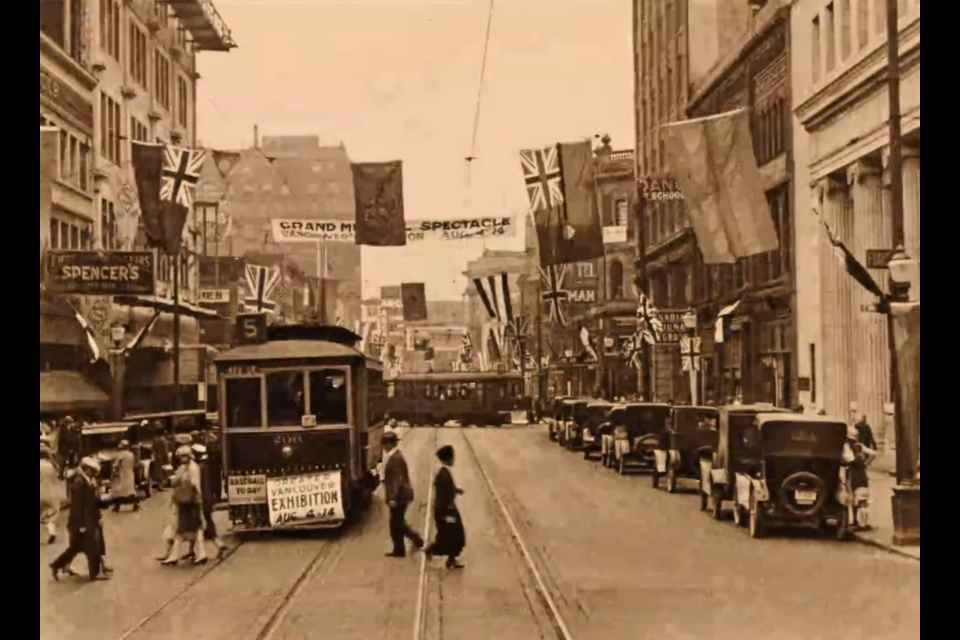"Vancouver, British Columbia, because of its magnificent scenic setting on the Pacific coast, is one of Canada's greatest commercial and tourist cities."
So starts Canada's Evergreen Playground, a promotional film advertising the city's views and commerce to the world...in 1934.
The film shows the city pre-World War II, with public transit and cars navigating streets full of pedestrians and cyclists...which is pretty similar to today. But, it's not often you'll see people in full suits wearing a boater hat, smoking a pipe and crossing a road in front of a bicycle.
Not impossible, but unlikely. It's the boater hat that's hard to find.
The film also captures a truly astounding number of flags crisscrossing the downtown area as streetcars roll through; one of particular note is the open-top version offering a sightseeing tour of the city (which the filmmakers take us on for a moment).
Another has signs stuck to the front advertising "Baseball Today" and the Greater Â鶹´«Ã½Ó³»Exhibition scheduled for mid-August.
And what would a trip to Â鶹´«Ã½Ó³»be without going to the beach? Actually, this section might be the highlight of the whole film, with a group of young men creating a human tower and women spinning parasols in what looks to be flapper hairstyles.
A shot from above the city captures the harbour, which looks similar though spectacularly underdeveloped compared to now. That's follwed by series of shots takes people through a neighbourhood, showing some of the nicer homes in the area at the time. This includes Hycroft, one of the city's more famous properties.
Of course there's also a tour through Stanley Park, as every visitor must do. However, perhaps more interesting are the shots from the Capilano Suspension Bridge, where there are very serious signs warning against swaying the structure.
The film was produced by the Canadian Government Motion Picture Bureau and released in 1934. The federal agency was responsible for making these sorts of films in the early days of the medium, but declined in the 1930s and became part of the National Film Board. While released in 1934 as a silent film, talkies were already common (for example, came out the same year).



